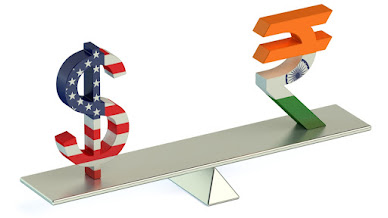Weakened INR Beneficial or Not?
Weakened INR Beneficial or Not?
A weakening rupee could have broad economic implications. Inflation and current account gaps could increase, but RBI can cushion the impact with its reserves.
In response to domestic factors and international factors, the Indian rupee has seen a 5% decline over the past year. It is expected that the rupee will continue to fall under pressure, but the question remains as to how much and what impact it might have on the Indian economy and the financial markets.
The rupee doesn't have to suffer: The recent turn in currency markets may be more of an overall dollar strengthening situation. This is because the US Federal Reserve has increased the dollar index by 9.9% this year, bringing it to a 20-year high. It is not just the Indian rupee that has been affected by it. Nearly all other currencies have been affected, from emerging markets like the Turkish lira, down 30%, to developed economies like the Japanese yen (16%) to the euro (7%). Even a controlled currency such as the Chinese Yuan has seen a 5% decline in value against the US dollar this year.
This isn't the first time that the US dollar has caused global havoc. The 2013 "taper tantrum" was the most severe in human history. The US Fed signaled that it would withdraw its ultra-accommodative monetary stimulus. The 2008-09 financial crisis caused massive capital outflows to emerge from markets. The Fed must be commended for being cautious in preparing the financial market for a post-pandemic drawdown. However, given global uncertainties and risk-off sentiments, this preparation will not suffice.
To make matters worse, global commodity prices are rising due to the dollar's strengthening. This is a rare exception and this is an anomaly. Normally, a stronger dollar means lower commodity prices. But the Russia-Ukraine conflict and global supply-chain problems have changed the rules. The combination of a strong dollar with soaring commodity prices has driven inflation to record high levels for net importing countries and increased their trade deficit, further reducing their currencies.
In 2022-23, India's current account deficit will likely increase to 3-3.5% of its gross domestic product (GDP). It is still less than the 3.8% deficit in 2013. Still, the fact that this has accompanied foreign portfolio outflows of $29 billion over the past six months means that India's balances of payments will likely move into negative territory in this fiscal year.
Where is the rupee heading? The Fed cannot help but raise rates, as consumer price inflation is hovering around 8% in the US, and personal consumption spending inflation is higher than 6%. This means that the dollar's upward trend will likely continue. To contain volatility in the rupee, the Reserve Bank of India has intervened in the forex market. The RBI will likely allow the Indian currency to weaken slowly as other emerging market currencies are weakening. We should therefore be ready for a rupee of 80 to the US dollar. India's foreign reserves have dropped by $35 billion in the past three months. The RBI has sufficient reserves of close to $600billion (12 months of import coverage) to offset the rupee's decline.
Our currency is about 2% above its long-term average based on the real exchange rate weighted by trade with 40 countries. There will be more weaknesses. A sharp decline is unlikely, though, as the RBI is increasing policy rates to match rate increases by the US Fed. One can avoid a sharp fall in the rupee's external worth if the US-India difference in interest rates is maintained.
The rough ride of the economy: We will benefit from the weakening Indian rupee. Many of India's export products, including electronics and pharma products, are high in import intensity, so they will not be able to benefit. In relative terms, Indian exports are more price elastic and less income elastic. At the moment, exports from India will feel the pinch from slowing global growth, especially in the US.
Inflation will rise if the Indian currency is weaker, which is already a serious concern given high commodity prices. India's dollar debt is also in danger. India's non-government debt, however, is 16% of GDP, and India's external debt to the government is currently at a low level of around 4%. A weakening rupee will affect corporate debt that is not in dollars.
Inflows of External Commercial Borrowing (ECB) could also fall. The ECB is responsible for approximately 36% of India's external debt. With global rates rising and the dollar strengthening, these loans are becoming more expensive. A weaker rupee could cause portfolio inflows to drop as foreign investors lose dollars.
The rupee will likely remain under pressure due to uncertain geopolitical conditions, rising interest rates, and high commodity prices. However, it could be managed by timely RBI rate increases, forex market intervention, and India's better macroeconomic fundamentals.



Comments
Post a Comment